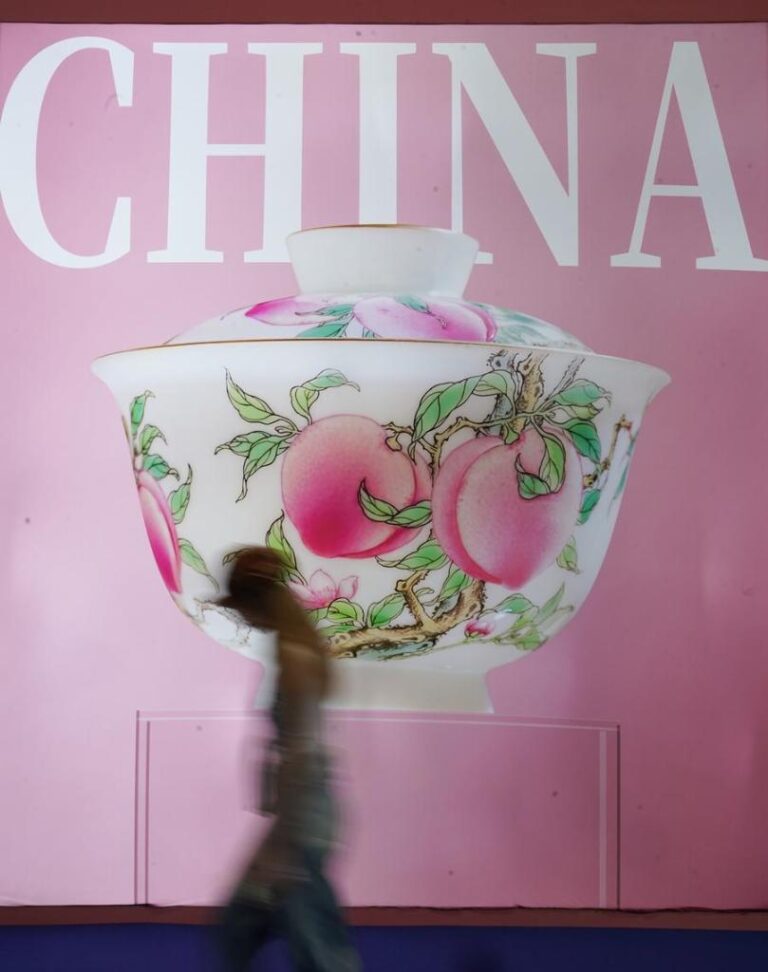* The AI technology boom sweeping China is taking root in art studios and modern factories across Jingdezhen, the country’s porcelain capital.
* During the 14th Five-Year Plan period (2021-2025), China has placed innovation at the heart of its modernization drive.
* While embracing new technologies, Jingdezhen continues to regard its centuries-old craftsmanship as the soul of the trade.
NANCHANG, Oct. 21 (Xinhua) — In Jingdezhen in east China, where flames have burned for ages to produce custom-made ceramics treasured across the globe, a new force is emerging to redefine this ancient handicraft — artificial intelligence (AI).
Thousands of porcelain shards from dragon jars lie carefully catalogued at the Jingdezhen Imperial Kiln Institute, where researchers are using AI to help piece together these centuries-old masterpieces.
“Archaeologists unearthed up to 7,000 porcelain fragments from different jars. Some are missing, others are deformed or show color variations, making assembly extremely difficult,” said Weng Yanjun, head of the institute. “By scanning the specimens and applying AI algorithms, we hope to make the restoration process more efficient.”
His team has built the world’s first “gene bank” for ancient ceramics, extracting data from hundreds of millions of shards. They hope that this AI-powered database will be widely applied in archaeology, restoration, authentication and cultural product development.
Beyond restoration labs, the AI technology boom sweeping China is also taking root in art studios and modern factories across this porcelain city in Jiangxi Province, enriching design, boosting efficiency and profits, and empowering artisans involved in its 2,000-year-old ceramics tradition.
At Cerawei Technology, AI-generated designs are brought to life through 3D printing, including a large ceramic screen artwork now on display in a busy shopping mall.
Yang Kuan, who is in charge of the company’s R&D, said more and more clients, driven by their creative visions, are using AI modeling platforms to draft initial designs before commissioning the company to refine and print them, although they are not trained designers themselves.
AI is also reshaping production. A research institute at Jingdezhen Ceramic University has teamed up with several organizations to launch an AI-powered kiln control system that collects real-time data concerning temperature, energy use, flame images and spectra to generate optimal digital firing plans.
This system has been deployed at two major ceramics producers and several smaller firms in the city since it was piloted in April, said Li Tao of the institute, adding that it has helped cut energy consumption by more than 8 percent and lift yield rates by over 10 percent.
At the ongoing China Jingdezhen International Ceramic Expo, rows of delicate teapots and vases now share space with AI-powered virtual sales hosts and blockchain authentication machines — a display of how tradition and technology are converging there.
Staff, notably, have demonstrated AI-powered virtual sales hosts for ceramics at the booth of Jingdezhen Cixin Artificial Intelligence Technology Co., Ltd.
“AI can empower innovation and design in ceramics, and support the entire sales process,” the company’s chairman Xu Yang said, adding that their system can generate short videos in 149 languages around the clock.
The company aims to empower over 500 firms in Jingdezhen via AI this year and provide training for more than 2,000 individuals in design and marketing.
NEW TECH VS TRADITION
During the 14th Five-Year Plan period (2021-2025), China has placed innovation at the heart of its modernization drive, building one of the world’s most advanced AI ecosystems and empowering sectors ranging from manufacturing and healthcare to transportation and finance.
The country’s AI sector has seen robust growth, with the number of enterprises exceeding 5,300 as of September, accounting for 15 percent of the global total, according to the China Academy of Information and Communications Technology.
The industry’s scale exceeded 900 billion yuan (about 126.4 billion U.S. dollars) in 2024, a year-on-year increase of 24 percent, the data showed.
Experts say the deep integration of AI-assisted design and intelligent manufacturing is opening new frontiers for traditional industries like the porcelain sector.
While embracing new technologies, Jingdezhen continues to regard its centuries-old craftsmanship as the soul of the trade, supported by more than 3,200 intangible cultural heritage inheritors and 100 production demonstration bases dedicated to preserving and passing on these skills.
“I think when new technology emerges, it’s unstoppable,” Weng said. “Instead of resisting it, the key is to learn how to use it well. AI is like giving us a pair of wings.”
But for individual artists, Jingdezhen’s transformation also raises questions about how far technology should reach into a craft rooted in imagination and artistry.
Simone Haak, a ceramic artist from the Netherlands who has frequently visited Jingdezhen, said she values modern tools but remains devoted to handmade craftsmanship.
“Every piece I make is different. I paint it myself,” she said. “This way, I can put my heart and feelings into it.”
(Reporting by Cheng Lu, Chen Yushan, Chen Pu and Yao Yuan)■

